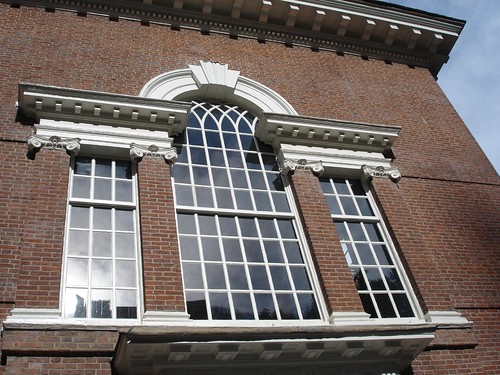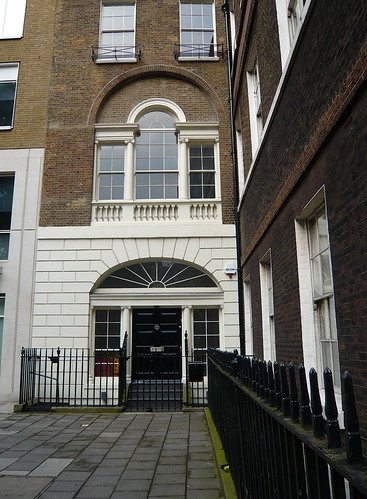Quite often, when I see a house that I love, it has a Palladian window. Palladian windows are named for Andrea Palladio (1508-1580), the Italian Renaissance architect who invented them in the sixteenth century. They are identified by the arch on top and the narrow panels on both sides of the central window. The Palladian window is one of Palladio's most popular and widely imitated design motifs. So appealing and influential was the design of Palladio that his work continues to inspire architects to this day.
Palladianism became popular in Europe in the 17th and 18th centuries, and experienced a surge of popularity in North America later in the late 18th century. Most notably, Thomas Jefferson promoted Palladianism in many of his architectural designs. Jefferson's Monticello and the University of Virginia have many architectural features characteristic of Palladian style. In fact, Jefferson referred to Palladio's "I Quattro Libri dell'Architettura" as his 'bible'.
So pervasive was the Palladian influence, that features of Palladian style can be found in Beaux Arts Classicism, Colonial Revival, Classical Revival, Federal, Georgian Revival, Neoclassicism, Shingle, Queen Anne styles. However, with time, the term Palladianism has become largely misused to describe anything with classical motifs.
Architects usually put Palladian windows in front of staircases or atriums, in order to provide a lot of light to large halls. Historically, Palladian windows most often appear in public buildings and the homes of the wealthy because glass was expensive int he eighteenth century and Palladian windows require more glass than regular windows.
 Independence Hall, Philadephia. Photo by Mirandala, Flickr.
Independence Hall, Philadephia. Photo by Mirandala, Flickr.
Palladian window above the door, Buffalo, NY
 A Yong Pak designed Tidewater Georgian, with a Palladian window.
A Yong Pak designed Tidewater Georgian, with a Palladian window.
 A grand home in Alabama with a Palladian window.
A grand home in Alabama with a Palladian window.
 500 Boylston Street, Boston. A post-modern use of the Palladian window design.
500 Boylston Street, Boston. A post-modern use of the Palladian window design.
 An extension of the Palladian window design...a Palladian door, Charleston, South Carolina
An extension of the Palladian window design...a Palladian door, Charleston, South Carolina


















































































Beautiful!
ReplyDeletePalladian windows are really beautiful! I especially love the really old ones with the thick chunky moldings and old glass. They just don't make 'em like they used to!
ReplyDeleteHappy Almost Thanksgiving!
I would move into that Detroit home today. Lovely!
ReplyDeleteI love Palladian windows, and every one you've shown here is amazing. Doesn't the home in the photo by DecoJim look a lot like the Lucas house on Peachtree?
ReplyDeleteJust amazing, I love all these images...makes me wish I was living on the east coast in big manor!
ReplyDelete~Kate
Another informative and inspiring post, well done! I love Palladian architecture but had not seen such a large collection of palladian style windows before. Thanks.
ReplyDeleteI have had no internet connection since last Saturday, so I apologize for the delayed reaction!
ReplyDeleteI love that home in Detroit too. It is classic. Yes, POC, it does look like that house on Peachtree (are you talking about the one at Peachtree and Lindberg?).
Thanks for all of the kind comments!
I especially love the doorway in Charleston.
ReplyDeleteI noticed you got some of your palladian images from Buffalo, NY - I was raised in Buffalo and now live in NYC working in an art gallery. Any connection to Buffalo aside from your great photos?
ReplyDeletePS Love your blog!
Hi Erin-
ReplyDeleteThere is a great architecture site that has quite a few examples from Buffalo. It looks like a lovely town!
Thanks for visiting my blog.
I am not sure why that last post came through as anonymous! I posted it.
ReplyDelete